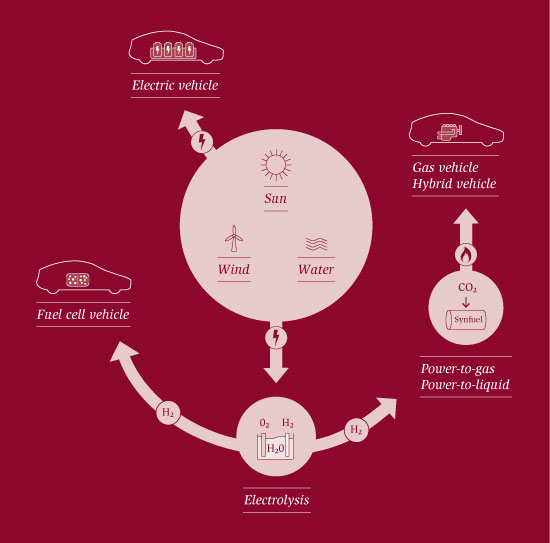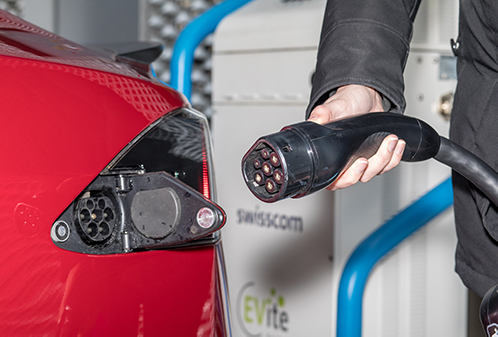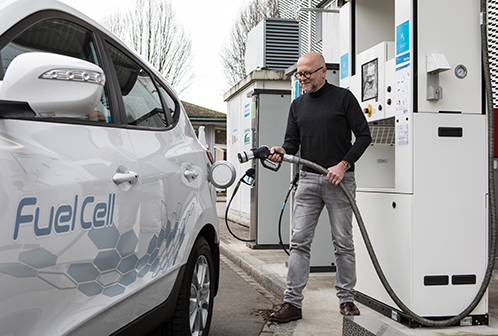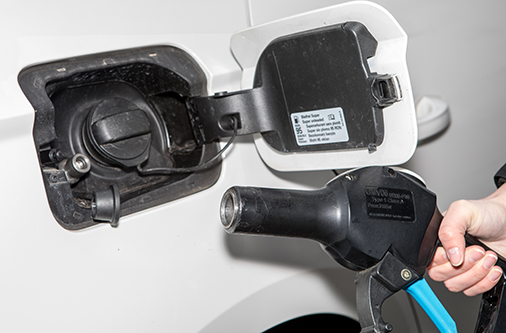Post-fossil Mobility
Today, motorized transport on the roads is still almost 100% dependent on fossil energy. In order to achieve the climate objectives of the Energy Strategy 2050, this must be completely converted to renewable energy by 2050. Long-distance transport represents a considerable challenge for vehicles and energy supply. This field is very relevant and therefore one of the focal points of the work at Empa.

Driving Multilane
Concerning CO2 emissions from traffic, the transition from fossil to renewable energy is crucial. Which drive concept is used where will probably be decided mainly by the infrastructure for energy supply and by the costs. A detailed understanding of this is developed in collaboration with implementation partners. The following scenarios could be possible:
- For short and medium distances – such as inner-city travels and commuting – electric vehicles are suitable.
- For short and medium distances in the truck sector, electric and hydrogen trucks are suitable.
- In the long-distance and cargo sector, vehicles powered by synthetic fuels will play an important role.

Running on Electricity
70 percent of typical daily trips with passenger cars are shorter than 50 kilometers. Such distances should be driven electrically in the future. Electric vehicles use solar and wind power most efficiently. However, electricity can only be stored for a short time. The challenge in the electricity market is therefore primarily the supply of clean electricity in the winter half-year.
Electric vehicles contribute to the flexibility of Switzerland's entire energy system by using their batteries to buffer PV surpluses during the day to supply buildings with electricity at night.

Running on Hydrogen
Hydrogen for mobility is produced by electrolysis. In this process, water is separated into its components O2 (oxygen) and H2 (hydrogen) using electricity.
The network of hydrogen filling stations is growing in many countries. In Switzerland, around 100 hydrogen filling stations are to be built in the next few years. Hydrogen drives will become increasingly important in Switzerland in the coming years, especially in the commercial vehicle sector.
Hydrogen production can contribute to the flexibility of the entire energy system by converting electricity surpluses into hydrogen in electrolysis plants. As with electric vehicles, the supply of low-CO2 hydrogen is a challenge in the winter months.

Running on Synthetic Fuels
Synthetic fuels – or synfuels – produced from hydrogen and CO2 can be transported cost-effectively over longer distances. This means that remote resources such as solar energy in desert regions or offshore wind energy can be tapped. The CO2 that escapes from the exhaust during combustion is taken from the atmosphere and used for the production of synfuels. CO2 is thus recycled. Synfuel and syngas can be mixed with gasoline, diesel or natural gas/biogas as required. The existing tank and storage infrastructure can be further used. The transition can happen continuously.
The disadvantage of synfuels is their production efficiency of only about 50%. However, since they are available as chemical energy carriers that can be stored rather easily, they increase the flexibility of the entire energy system.













